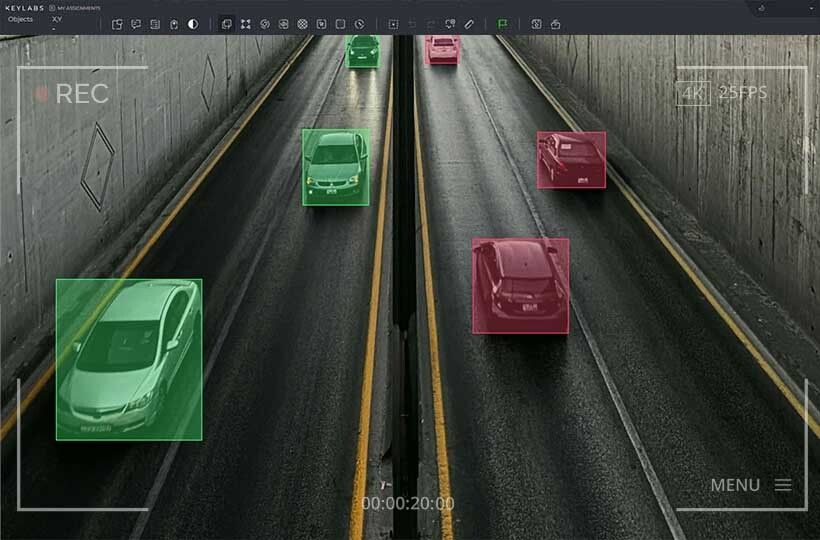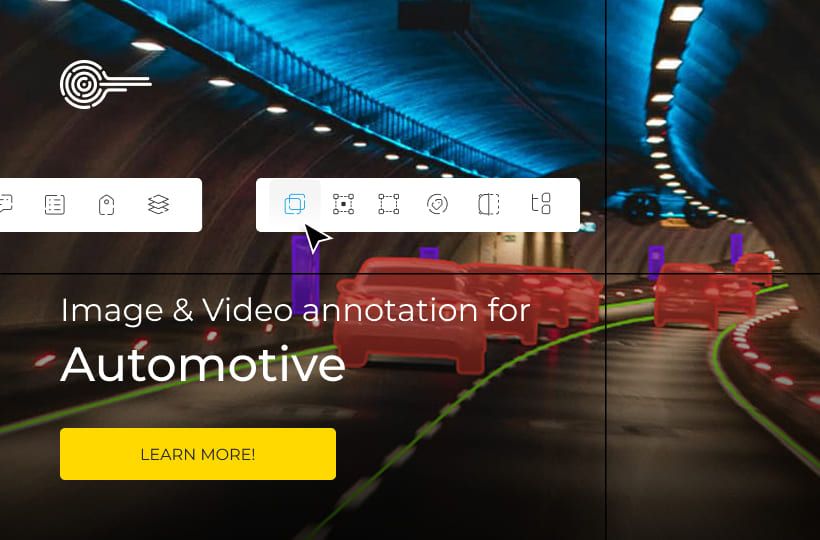Real-time annotation systems for active applications
Real-time annotation systems provide fast and accurate instant labeling and live annotation, allowing you to transform streaming data into structured datasets for training real-time AI models. They integrate automated processes with human control, supporting a variety of data types, from images and video to text and audio, enabling dynamic annotation and live data processing. They allow teams to work together in real time. The use of such platforms in industry, medicine, automotive, robotics and retail aims to accelerate the process of training models, improve the accuracy of analytics and optimize workflows.
Quick Take
- Annotations occur without delay, enabling real-time processing and dynamic annotation, allowing you to track and classify objects on the fly.
- The platforms work with images, video, text, audio and 3D data.
- Allow annotators and project managers to work together and check the consistency of annotations.
- Active learning, AI prompts and automated algorithms to speed up the process.
- Encryption, access control, anonymization, and isolated environments to protect sensitive information.
- The platforms adapt to specific projects, can handle large amounts of data, and integrate your client models.

Understanding the Basics of an Annotation Tool
An annotation tool is a software environment or platform designed to mark up data to train artificial intelligence models. The main goal is to transform "raw" data into structured, machine learning-friendly datasets.
Annotation tools allow annotators to label objects, entities, events, emotions, or other characteristics in data according to instructions.
Key components of a tool
- A markup interface, where the user highlights or classifies data fragments.
- A project management system that tracks progress, assigns tasks, and provides quality control.
- A database or repository where annotation results are stored.
- QA mechanisms to manually or automatically check the consistency of the markup.
Using annotation tools is essential for building reliable artificial intelligence models, as the quality of the training data affects the accuracy and validity of the model.
Modern annotation platforms enable efficient, scalable data preparation for analysis and modeling through automation, integration with AI-driven insights, and quality control.
Annotation tools features
Real-time annotations usage options
Real-time annotations automatically recognize, classify, and track objects in live video streams, performing instant labeling and live data processing without saving files first. Security and monitoring allow you to detect suspicious objects, track traffic or people, and notify operators of potential risks.
- In industry, it is used to control production lines, detect defects on the conveyor, or monitor the condition of equipment, allowing you to respond to problems and reduce waste.
- In medicine, it helps doctors analyze MRI, ultrasound, or X-ray images in real time to detect anomalies and support diagnostics.
- In automotive and robotics, annotations enable autonomous driving and driver assistance systems by identifying road signs, pedestrians, and other vehicles on the move.
- In marketing and retail, it analyzes store customer behavior, tracks product interactions, or optimizes product placement.

Key characteristics of a quality annotation platform
Keylabs Real-Time Annotation Tools
Keymakr is a real-time data annotation platform that specializes in creating high-quality datasets for machine learning and computer vision. It combines automation with human quality control, allowing users to work with large volumes of data in various industries.
Keymakr Key Features
The Keylabs platform has tools for annotating images, videos, and 3D data. Keylabs supports a variety of annotation methods, including:
- Bounding box
- Rotated bounding boxes
- Polygon annotation
- Cuboid annotation
- Semantic segmentation
- 3D point cloud annotation
- Automatic annotation
Features and capabilities
Automated real-time annotation with quality control. Combines machine learning with human supervision to perform instant labeling of streaming data quickly and accurately. Uses interpolation methods and ML models such as SAM and YOLO to accelerate the video and image annotation process.
Real-time and teamwork. The platform supports real-time annotation and allows collaboration between annotators and project managers. This ensures fast feedback and efficient project management.
Flexibility and scalability. Works with various data types and can scale for large projects. The platform supports integration with customers' ML models to adapt the annotation process to specific needs.
Quality control and monitoring. It uses consistency metrics between annotators to assess and improve the quality of annotations, optimizing workflows and ensuring data accuracy.
Suitable for projects
- In the following industries: automotive, medical, agriculture, security, logistics, robotics, retail, and environmental protection.
- Development of autonomous systems, robots, drones, and medical diagnostic tools.
- Real-time use for monitoring and analyzing videos and images.
Modern solutions for effective data annotation
Optimized visual feedback is a system that allows annotators and developers to see the result of markup or changes to data in real time. The principle of operation is that each annotation or correction is displayed on a visual interface, often using highlighting, color labels, or overlays, to assess the accuracy and completeness of the markup quickly. The advantage of this approach is to speed up the quality control process, reduce errors, increase consistency between annotators, and allow for adjustments, which is crucial for dynamic annotation of large volumes of streaming data and complex projects in real time.
Active learning is a machine learning approach where the model selects the most "informative" or complex examples from a dataset that require manual annotation or validation. Instead of annotating the entire large dataset, the system suggests for annotation only those examples that will improve the quality of the model. After the annotations are complete, the model is retrained, and the process is repeated. The advantage of active learning is that it reduces the amount of data that needs to be annotated, saving time and resources. It also speeds up the achievement of model accuracy, since attention is focused on the most complex or ambiguous examples.
FAQ
How do live annotation systems improve team workflows?
Live annotation systems improve team workflows by automatically highlighting the most challenging examples for annotation, speeding up model training, and increasing the accuracy of results.
What file types work best with modern labeling tools?
Modern labeling tools work best with standard formats such as JPEG/PNG for images, MP4 for video, WAV/MP3 for audio, and CSV/JSON for text and structured data.
What aspects should a good data annotation platform have?
A good data annotation platform should support different data types, offer a variety of annotation tools, be scalable, integrate ML, ensure quality control, have a user-friendly interface, and offer security, teamwork, and automation capabilities.
What security features protect sensitive data during annotation?
Sensitive data during annotation is protected using encryption, access control, data anonymization, and isolated processing environments.
